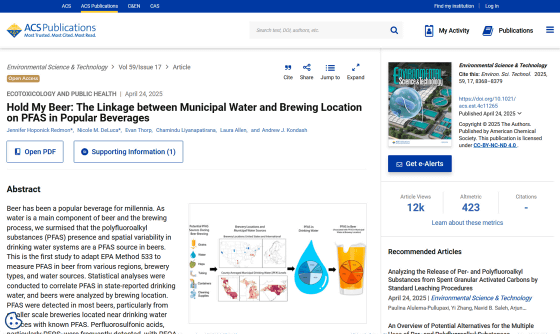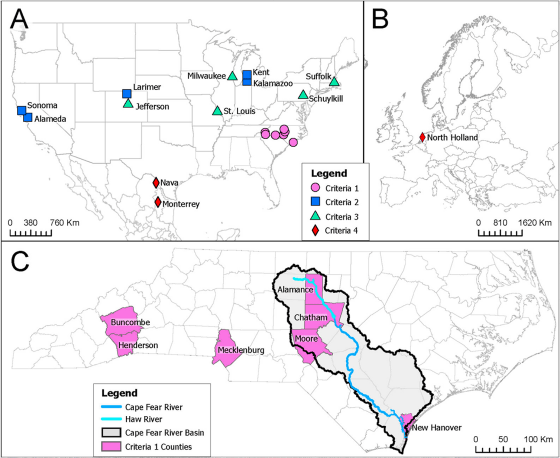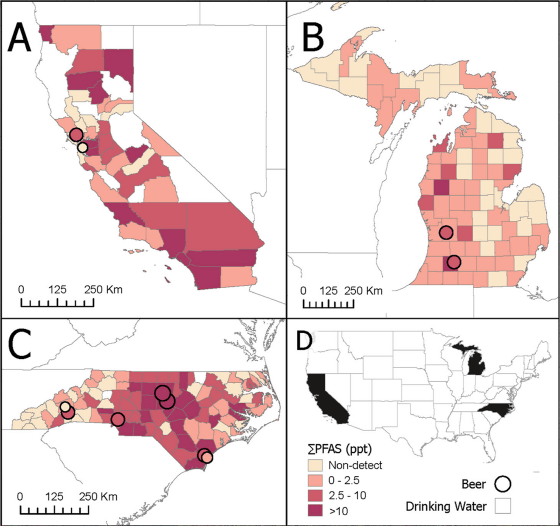PFAS found in US beer exceeding safety standards

Hold My Beer: The Linkage between Municipal Water and Brewing Location on PFAS in Popular Beverages | Environmental Science & Technology
https://pubs.acs.org/doi/10.1021/acs.est.4c11265

Research reveals 'forever chemicals' present in beer - American Chemical Society
https://www.acs.org/pressroom/presspacs/2025/may/research-reveals-forever-chemicals-present-in-beer.html
'Forever Chemicals' Found in Popular US Beers, Above EPA Limits : ScienceAlert
https://www.sciencealert.com/forever-chemicals-found-in-popular-us-beers-above-epa-limits
PFAS is a general term for organic fluorine compounds in which multiple fluorine atoms are bonded to an alkyl chain , and it is estimated that there are approximately 12,000 types in total. PFAS, which are highly water- and oil-repellent and heat-resistant, are widely used in frying pan coatings, fire extinguishing agents, food packaging paper, electronic devices, and more.
However, previous research has shown that PFAS remain in the environment for long periods of time, and in recent years their harmful effects have been attracting attention. Although much is unknown about the adverse health effects of PFAS, two types in particular , perfluorooctanoic acid (PFOA) and perfluorooctane sulfonate (PFOS) , have been linked to problems such as increased risk of cancer and birth defects .
A 2023 study linked PFAS found in fire extinguishing foam to the risk of testicular cancer in military personnel and firefighters.
Link between 'eternal chemicals' PFAS and testicular cancer in military personnel revealed - GIGAZINE

PFAS contamination is widespread around the world, including in the United States, and has been found not only in surface water and groundwater, but also in tap water provided by local governments. A research team from the Research Triangle Institute , a non-profit organization in the United States, wondered whether PFAS might be present in 'beer,' which uses tap water for production. 'I myself drink beer occasionally, so I wondered whether PFAS in the tap water might be seeping into the beer,' said research leader Jennifer Hoponic Redmon.
In 2021, the research team purchased five or more cans of 23 types of beer at a liquor store in North Carolina in the southeastern United States, and investigated whether PFAS was present in the beer and, if so, how much was present. The breakdown of the beers purchased was 10 types of beer made by breweries in North Carolina, two types of beer each from Michigan , Colorado , and California , and one type each from Massachusetts , Pennsylvania , Wisconsin , and Missouri . The remaining beers were from outside the United States, including one beer from the Netherlands and two beers from Mexico.
Analyses showed that nearly every can tested contained at least one type of PFAS. Two beers from a brewery in the upper Cape Fear River basin in North Carolina and one from a brewery in Michigan contained levels of PFOA that exceeded the EPA's maximum limits. One beer from a brewery in the lower Cape Fear River basin also exceeded the EPA's maximum limits for PFOS.
The diagram below shows the locations of the breweries where the beers were tested. A shows the locations of breweries in the United States and Mexico, and B shows the locations of breweries in the Netherlands. C shows breweries in North Carolina, which had a particularly large variety of beers. Even if the beers are from the same state of North Carolina, some were made by breweries in the Cape Fear River basin, shown in light blue, while others were made by breweries in different regions.

Below is a chart showing the PFAS concentrations in public tap water by state (A: California, B: Michigan, C: North Carolina), with the locations of breweries indicated by circles. D shows the location of each state in the U.S. The research team reported a strong correlation between PFAS concentrations in municipal drinking water and those in locally brewed beer.

'UsingMethod 533 , developed by the EPA to detect PFAS in drinking water, we analyzed PFAS in beer sold at retail stores in the United States and found that the PFAS in beer correlated with the types and concentrations of PFAS in the urban drinking water used for brewing,' the research team said. 'North Carolina beers, particularly those from the Cape Fear River Basin, generally had more PFAS types than beers from Michigan and California, reflecting the diversity of PFAS sources in North Carolina.'
While high PFAS contamination was found in beer from the United States, beer from the Netherlands and Mexico was less likely to have detectable PFAS, suggesting that these countries may not face the same level of PFAS contamination as the United States.
In their paper, the research team concluded: 'Our findings indicate a strong association between PFAS in drinking water and beer. Beer brewed in areas with higher local PFAS concentrations in drinking water also had higher PFAS concentrations in the beer, indicating that drinking water is a major pathway for PFAS contamination of beer.'

Related Posts:
in Free Member, Science, Food, Posted by log1h_ik







